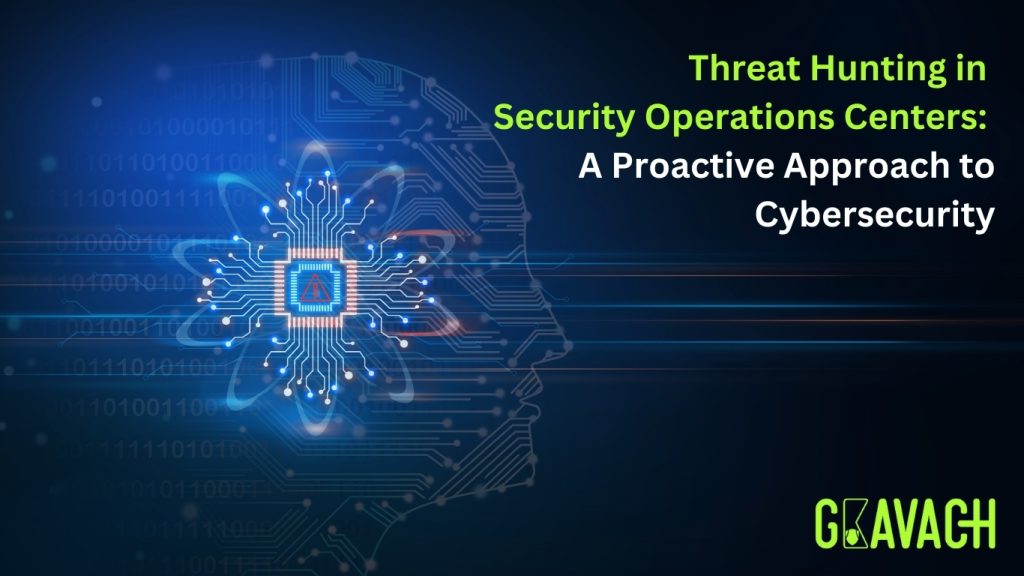
In the ever-evolving landscape of cybersecurity, organizations are increasingly recognizing the necessity of threat hunting as an integral component of their Security Operations Centers (SOCs). Unlike traditional reactive security measures, threat hunting involves proactively searching for hidden threats within an organization’s network that may have escaped detection by existing security tools. This article delves into the significance of threat hunting in SOCs, its methodologies, and best practices for effective implementation.
Understanding Threat Hunting
Threat hunting is defined as a proactive strategy aimed at identifying previously unknown or ongoing threats within an organization’s environment. It goes beyond conventional security measures, which often rely on automated systems that can miss sophisticated attacks. According to industry insights, while automated tools may address about 80% of threats, the remaining 20% often include advanced persistent threats (APTs) that can linger undetected for extended periods – sometimes up to 280 days.
The primary goal of threat hunting is to reduce the time between intrusion and discovery, thereby minimizing potential damage. Effective threat hunters bring a human element to cybersecurity, utilizing their expertise to analyze data and identify anomalies that automated systems might overlook.
In this context, it is essential for organizations to be data-informed rather than solely data-driven. While data-driven approaches rely heavily on quantitative metrics and automated alerts, being data-informed allows analysts to incorporate qualitative insights – such as contextual knowledge about the organization’s operations and threat landscape into their investigations. This holistic view enhances the effectiveness of threat hunting efforts and leads to more nuanced decision-making.
Key Methodologies in Threat Hunting
Threat hunting encompasses various methodologies that enhance the ability of SOCs to detect and respond to threats effectively:
- Hypothesis-Driven Hunting: This approach starts with a hypothesis based on indicators of compromise (IoCs) or known attack patterns. Hunters formulate questions about potential vulnerabilities and seek evidence within the data.
- Behavioral Analysis: Threat hunters use this technique to establish a baseline of normal network behavior, allowing them to detect anomalies that could signify malicious activity. By implementing User and Entity Behavior Analytics (UEBA), they can identify and flag unusual patterns more effectively.
- Intelligence-Based Hunting: Utilizing threat intelligence feeds, hunters can focus on known adversaries and their tactics. This method allows SOC teams to anticipate potential attacks based on current threat landscapes.
- Post-Incident Hunting: After a security incident occurs, hunters conduct retrospective analyses to uncover any additional threats that may have been present during the breach. This assists in understanding the attack vector and enhancing future defenses.
In each of these methodologies, being data-informed means not just relying on raw data but also considering the broader context surrounding that data – such as historical incidents, industry trends, and organizational changes – to inform hunting strategies.
Best Practices for Implementing Threat Hunting
To boost the effectiveness of threat hunting in SOC operations, organizations should embrace these key best practices.
- Invest in Skilled Personnel: A successful threat hunting program requires experienced analysts who understand both the technical landscape and the organization’s specific environment. Continuous training and certification opportunities can enhance their skills.
- Leverage Advanced Tools: Utilizing sophisticated tools such as Security Information and Event Management (SIEM) systems, endpoint detection and response (EDR) solutions, and behavioral analytics platforms can significantly improve threat detection capabilities.
- Develop Clear Processes: Establishing structured processes for conducting hunts is crucial. This includes defining roles within the SOC, outlining methodologies for investigation, and setting measurable objectives for success.
- Encourage Collaboration: Encourage communication between threat hunters and other teams within the organization. Sharing insights from threat hunting activities can enhance overall security posture and facilitate quicker responses to emerging threats.
- Measure Success Metrics: Organizations should consider key performance indicators (KPIs) related to threat hunting efforts. Metrics such as the number of identified threats, time taken to detect incidents, and reduction in false positives can provide valuable insights into the effectiveness of the program.
Moreover, by emphasizing a data-informed approach when measuring success metrics, organizations can better interpret results through qualitative lenses – understanding not just what happened but why it happened and how it aligns with broader organizational goals.
Conclusion
As cyber threats continue to grow in sophistication and frequency, integrating threat hunting into Security Operations Centers has become essential for organizations aiming to safeguard their digital assets. By adopting proactive methodologies and promoting a culture of continuous improvement, SOCs can enhance their ability to detect and respond to advanced threats effectively.
The proactive nature of threat hunting not only minimizes risks but also empowers organizations to stay one step ahead of cyber adversaries in an increasingly complex threat landscape. By being data-informed rather than solely data-driven, SOC teams can leverage both quantitative insights and qualitative context to make more informed decisions that ultimately strengthen their cybersecurity posture.